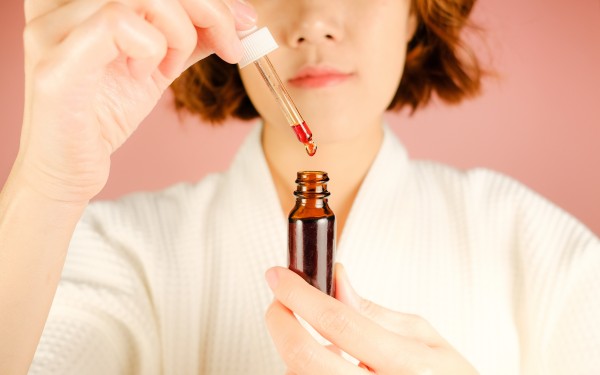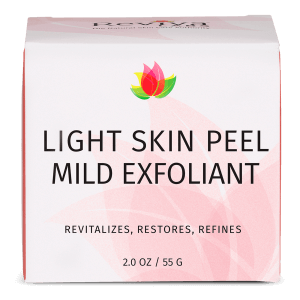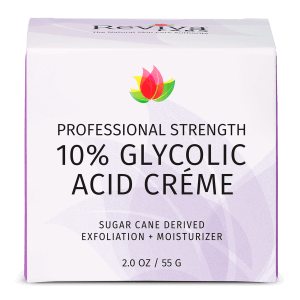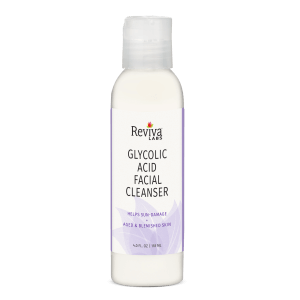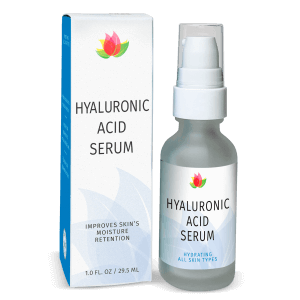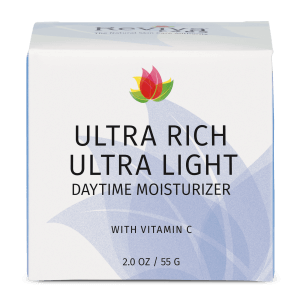Reviva Labs, Skin Care
Understanding Acne Scars
Acne scars are a common aftermath of acne breakouts, that can affect one’s confidence and skin texture. When acne forms, the skin pore gets clogged with excess oil, dead skin cells, and bacteria.
The clogging causes the pore to swell up, like how a balloon expands when filled with air. If the swelling becomes too intense, it can cause a rupture in the wall of the pore, like a balloon bursting when it’s overfilled. Deep breaks in the wall of the pore can cause the infected material to spill out into the surrounding tissue which creates deeper lesions. The skin attempts to repair these lesions by forming new collagen fibers, but the repairs usually aren’t as smooth and flawless as the original skin. This is why acne scars often look uneven and can vary in texture and appearance.
Types of Acne Scars
Acne scars come in different types, and understanding these can help in determining the best treatment. Atrophic scars are the most common and are divided into three categories: ice pick, boxcar, and rolling scars. Ice pick scars are narrow, deep, and pitted, making the skin look like it’s been punctured. Boxcar scars are broader, with well-defined edges, giving the skin a pitted appearance. Rolling scars create a wave-like texture on the skin due to their shallow, wide indentations. Hypertrophic scars, on the other hand, are raised and form when the skin produces too much collagen as it heals.
Causes of Acne Scars
Several factors contribute to the development of acne scars. Genetics play a significant role in whether you will scar or not. If your parents had acne scars, there’s a good chance you will also be more prone to them.
Inflammation is another key player in scar formation. The more your skin becomes inflamed in response to acne, the more likely you are to develop scars. Inflammatory acne lesions, such as papules, pustules, and cysts, are particularly prone to scarring.
The severity and duration of acne also influence scarring. Severe acne is more likely to leave scars than milder forms. Additionally, improper handling of acne, such as picking or squeezing pimples, can worsen inflammation and increase the risk of scarring.
Lastly, delayed treatment greatly increases the likelihood of scarring. Timely and appropriate acne management can prevent scars from forming in the first place.
Topical Treatments for Acne Scars
Topical treatments can also play a role in managing acne scars. Retinoids, derived from vitamin A, are widely used in skincare for their ability to increase cell turnover and promote collagen production. Regular use of retinoids can help fade acne scars over time and improve skin texture. Additionally, products containing alpha hydroxy acids (AHAs) and beta hydroxy acids (BHAs) can exfoliate the skin, reducing the appearance of scars.
Hydration is essential for healthy skin and can aid in scar healing. Using moisturizers that contain ingredients like hyaluronic acid can keep the skin plump and hydrated, making scars less prominent. Sunscreen is another critical component of scar management. Exposure to UV rays can darken scars and make them more noticeable. Daily use of a broad-spectrum sunscreen can prevent further damage and support the healing process.
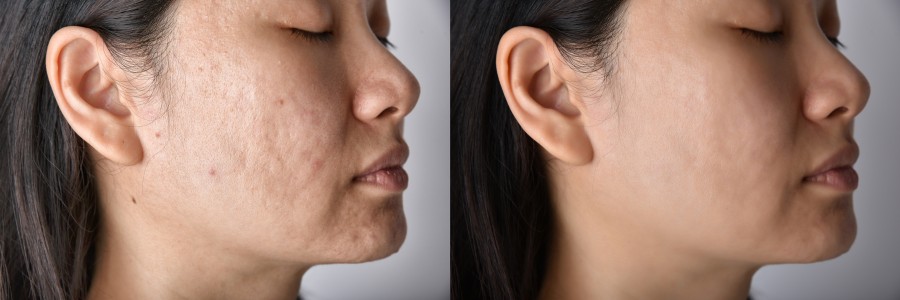
Some natural remedies and home care practices can also aid in reducing acne scars. Ingredients like aloe vera, honey, and coconut oil have anti-inflammatory and healing properties that can soothe the skin and promote regeneration. Regular exfoliation with gentle scrubs or brushes can help remove dead skin cells and improve the skin’s texture over time.
Professional Treatments
For more severe acne scars, professional treatments may be necessary. One of the most popular treatments is laser therapy. Laser treatments, such as fractional laser and ablative laser, work by removing the outer layer of damaged skin and stimulating collagen production in the underlying layers. These procedures can significantly improve skin texture and reduce the appearance of scars over time.
Chemical peels are another effective treatment for acne scars. These involve applying a chemical solution to the skin, which exfoliates the damaged outer layer and promotes the growth of new, smoother skin. Different types of peels, such as glycolic acid, salicylic acid, and lactic acid, can be used depending on the skin type and severity of scars. Chemical peels can improve the overall skin tone and texture, making scars less noticeable.
Microneedling and Fillers
Microneedling, also known as collagen induction therapy, involves using fine needles to create tiny punctures in the skin. This controlled injury triggers the body’s natural healing process, stimulating collagen and elastin production. Microneedling can effectively treat various types of acne scars, particularly atrophic scars, by improving skin texture and reducing scar depth.
Dermal fillers offer another solution for atrophic scars. Fillers like hyaluronic acid are injected into the scarred area to raise the depressed skin and smooth out the surface. This treatment provides immediate results and can last for several months. While not a permanent solution, dermal fillers can be an excellent option for those seeking a quick and noticeable improvement in their skin’s appearance.
The Role of Patience in Acne Scar Treatment
Treating acne scars is a process that requires patience and consistency. It’s important to set realistic expectations and understand that improvement takes time. Combining multiple treatments and maintaining a regular skincare routine can yield the best results. Consulting with a dermatologist can provide personalized advice and access to advanced treatments that may not be available over the counter.
By taking a comprehensive approach to treatment and self-care, it’s possible to improve the appearance of acne scars and achieve healthier, smoother skin. Whether through topical treatments, professional procedures, or natural remedies, there are various options available to help you on your journey to clearer skin.






